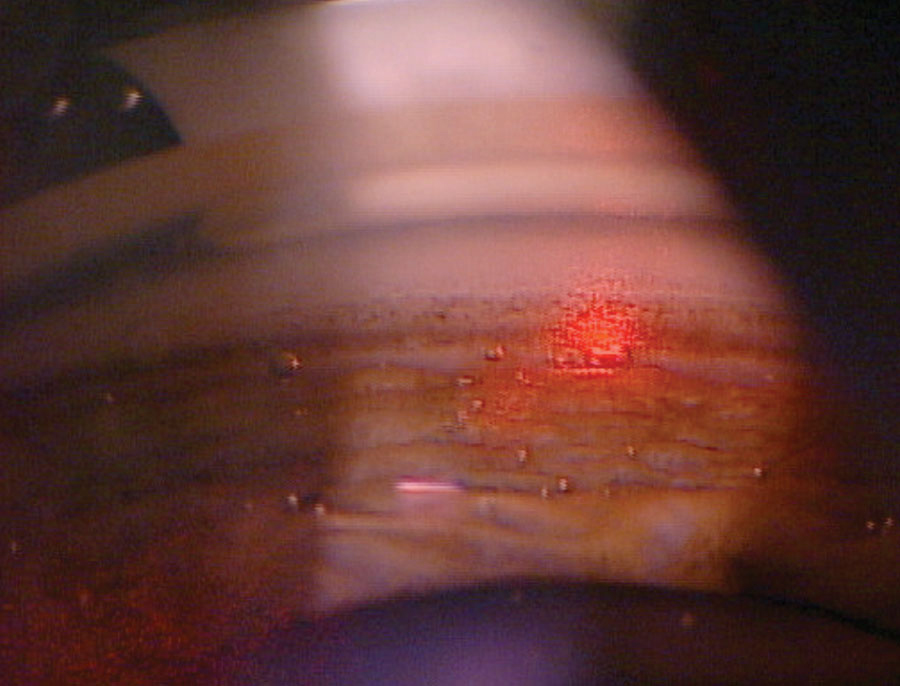 |
| Almost 42% of patients in this study were successfully treated by SLT as indicated at the one-year follow-up. Photo: Nathan Lighthizer, OD. Click image to enlarge. |
Selective laser trabeculoplasty (SLT) has been proven to effectively lower intraocular pressure (IOP) in open-angle glaucoma patients by targeting the pigmented trabecular meshwork without causing collateral thermal damage to the surrounding anatomy. However, in the past, minimal research has been done to investigate the therapy’s effectiveness in treating patients with pseudoexfoliation glaucoma (PEXG), a common form of secondary open-angle glaucoma with worse IOP characteristics that make it more difficult to manage. As the first to do so, this study evaluated and confirmed the safety and effectiveness of this treatment modality in lowering IOP in patients with medically refractory PEXG.
The retrospective observational study based in Korea included 43 medically uncontrolled PEXG patients (mean age 74) who underwent 360° SLT between 2012 and 2017 and were followed for at least a year. IOP levels were measured before SLT and after at one week and one, three, six and 12 months. The researchers defined a successful treatment as one resulting in an IOP reduction of more than 20% from baseline and an IOP lower than 22mm Hg without the need for anti-glaucoma intervention. Side effects of SLT were also closely monitored and recorded.
The rate of treatment success rate at one year after SLT was 41.9% (18 eyes). Patients in the success group showed a mean IOP reduction of 10.3mm Hg at the one-year follow-up, demonstrating that for some PEXG patients, the IOP-lowering effect of SLT may be maintained for more than a year.
SLT was able to successfully lower IOP in patients at every interval throughout follow-up, even for those whose treatment was not marked as successful based on the Kaplan-Meier survival analysis. “All the mean IOPs at each time period after SLT were significantly lower than the baseline IOP,” the researchers wrote in their study. “Additionally, during the entire follow-up period, there was no serious adverse event following SLT.”
Considering the patients included in this study could not previously achieve IOP control with maximal medical therapy, these results indicate that SLT could be a promising treatment solution for many. “Surely, this result does not mean that SLT is the best treatment option for every medically uncontrolled PEXG patient,” the researchers noted. “However, patients with PEXG are relatively older and often have significant systemic disease. Therefore, some of them may not be able to undergo or may have to postpone the filtering surgery because of poor general conditions. In this case, SLT can be considered as a feasible alternative treatment option with an acceptable safety profile, which may help in delaying or even avoiding surgery in some patients.”
Lee JH, Na JH, Chung HJ, et al. Selective laser trabeculoplasty for medically uncontrolled pseudoexfoliation glaucoma in Korean eyes. Korean J Ophthalmol. October 12, 2021. [Epub ahead of print]. |

